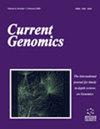DHFS-ECM: Design of a Dual Heuristic Feature Selection-based Ensemble Classification Model for the Identification of Bamboo Species from Genomic Sequences
IF 1.4
4区 生物学
Q4 BIOCHEMISTRY & MOLECULAR BIOLOGY
引用次数: 0
Abstract
Problem: Analyzing genomic sequences plays a crucial role in understanding biological diversity and classifying Bamboo species. Existing methods for genomic sequence analysis suffer from limitations such as complexity, low accuracy, and the need for constant reconfiguration in response to evolving genomic datasets. Aim: This study addresses these limitations by introducing a novel Dual Heuristic Feature Selection- based Ensemble Classification Model (DHFS-ECM) for the precise identification of Bamboo species from genomic sequences. Methods: The proposed DHFS-ECM method employs a Genetic Algorithm to perform dual heuristic feature selection. This process maximizes inter-class variance, leading to the selection of informative N-gram feature sets. Subsequently, intra-class variance levels are used to create optimal training and validation sets, ensuring comprehensive coverage of class-specific features. The selected features are then processed through an ensemble classification layer, combining multiple stratification models for species-specific categorization. Results: Comparative analysis with state-of-the-art methods demonstrate that DHFS-ECM achieves remarkable improvements in accuracy (9.5%), precision (5.9%), recall (8.5%), and AUC performance (4.5%). Importantly, the model maintains its performance even with an increased number of species classes due to the continuous learning facilitated by the Dual Heuristic Genetic Algorithm Model. Conclusion: DHFS-ECM offers several key advantages, including efficient feature extraction, reduced model complexity, enhanced interpretability, and increased robustness and accuracy through the ensemble classification layer. These attributes make DHFS-ECM a promising tool for real-time clinical applications and a valuable contribution to the field of genomic sequence analysis.DHFS-ECM:设计基于双重启发式特征选择的集合分类模型,从基因组序列中识别竹子物种
问题:分析基因组序列对了解生物多样性和竹类分类起着至关重要的作用。现有的基因组序列分析方法存在一些局限性,如复杂性、准确性低以及需要根据不断变化的基因组数据集进行不断的重新配置。目的:针对这些局限性,本研究引入了一种新颖的基于双启发式特征选择的集合分类模型(DHFS-ECM),用于从基因组序列中精确识别竹类物种。方法:所提出的 DHFS-ECM 方法采用遗传算法进行双重启发式特征选择。这一过程可最大限度地提高类间方差,从而选择出信息丰富的 N-gram 特征集。随后,利用类内方差水平创建最佳训练集和验证集,确保全面覆盖特定类别的特征。然后通过集合分类层处理所选特征,结合多个分层模型进行物种分类。结果与最先进方法的对比分析表明,DHFS-ECM 在准确率(9.5%)、精确率(5.9%)、召回率(8.5%)和 AUC 性能(4.5%)方面都有显著提高。重要的是,由于双启发式遗传算法模型的持续学习功能,即使物种类别数量增加,该模型也能保持良好的性能。结论DHFS-ECM 具有几个关键优势,包括高效特征提取、降低模型复杂性、增强可解释性以及通过集合分类层提高稳健性和准确性。这些特点使 DHFS-ECM 成为一种很有前途的实时临床应用工具,也是对基因组序列分析领域的宝贵贡献。
本文章由计算机程序翻译,如有差异,请以英文原文为准。
求助全文
约1分钟内获得全文
求助全文
来源期刊

Current Genomics
生物-生化与分子生物学
CiteScore
5.20
自引率
0.00%
发文量
29
审稿时长
>0 weeks
期刊介绍:
Current Genomics is a peer-reviewed journal that provides essential reading about the latest and most important developments in genome science and related fields of research. Systems biology, systems modeling, machine learning, network inference, bioinformatics, computational biology, epigenetics, single cell genomics, extracellular vesicles, quantitative biology, and synthetic biology for the study of evolution, development, maintenance, aging and that of human health, human diseases, clinical genomics and precision medicine are topics of particular interest. The journal covers plant genomics. The journal will not consider articles dealing with breeding and livestock.
Current Genomics publishes three types of articles including:
i) Research papers from internationally-recognized experts reporting on new and original data generated at the genome scale level. Position papers dealing with new or challenging methodological approaches, whether experimental or mathematical, are greatly welcome in this section.
ii) Authoritative and comprehensive full-length or mini reviews from widely recognized experts, covering the latest developments in genome science and related fields of research such as systems biology, statistics and machine learning, quantitative biology, and precision medicine. Proposals for mini-hot topics (2-3 review papers) and full hot topics (6-8 review papers) guest edited by internationally-recognized experts are welcome in this section. Hot topic proposals should not contain original data and they should contain articles originating from at least 2 different countries.
iii) Opinion papers from internationally recognized experts addressing contemporary questions and issues in the field of genome science and systems biology and basic and clinical research practices.
 求助内容:
求助内容: 应助结果提醒方式:
应助结果提醒方式:


